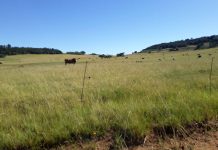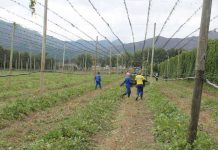Farmers and ranchers are used to making the most of what they have. They’ll find an old part and adapt it to fix a piece of equipment before they waste money and time going to town and buying a new one. There’s no end to the innovative uses of duct tape and baling wire! If you want to see some real, down-to-earth inventiveness, just go visit a working farm. They’ve done everything they can to keep things going with minimal waste of money and productivity.
When it comes to what we grow on our farms, however, there’s too much waste. As much as 40 percent of the food we produce goes uneaten, according to USDA’s Economic Research Service. That’s food that requires resources like water and energy to grow, resources that are wasted along with the end-product if food is thrown away. Of course, it’s wasted money as well, to the tune of about $165 billion a year spent on food that’s thrown away. And then there’s all that garbage—around 21 percent of landfill content is food waste. We can fix this!
More than half of the food we toss is wasted by consumers, but there’s waste at every point from farm to table. We’re all responsible, so we all can do more to be conscious of the problem and correct it.
Those ever-resourceful and efficient farmers and ranchers are doing more. Some, like Pennsylvania dairy farmer Brett Reinford, are using crop waste to feed anaerobic digesters and make electricity and fertilizer. They’re donating less-than-perfect, but perfectly delicious fruits and vegetables to charitable organizations. And thanks to modern agricultural technology such as genetic modification, they’re using less land, water, fuel and pesticides to grow more food. Farmers are doing a good job of being sustainable, and they want to do an even better job in the future.
At the consumer level, awareness is the first step to reducing food waste. Most of us just don’t give enough thought to the amount of food we allow to spoil in our refrigerators and pantries. Others may think about it but not know how to fix it. What are you supposed to do with those stale crackers, limp carrots or day-old leftovers?
That’s why the American Farm Bureau has teamed up with CropLife America and other agricultural organizations to create the “No Taste for Waste” campaign. It’s an initiative to not only help everyone become more aware of food waste, but also to provide tips and ideas to limit waste—like sticking to a meal plan and shopping list, and understanding what “sell by” and “use by” dates really mean. Along the way, consumers can learn more about how farmers and ranchers are working to be more sustainable and reduce waste. Like Tennessee farmer Brandon Whitt who uses GPS technology to target just the right amount of “inputs” like fertilizer to only the areas of a field where it’s needed. Or Mike and April Clayton of Washington, who donate their “ugly” apples and cherries to make everything from cider to pies for those who need help putting food on their tables.
Farmers and ranchers have become so incredibly productive, and with food relatively affordable for most Americans it’s easy to take it for granted. But farmers and ranchers don’t want to see the products of their hard work go to a landfill. Our farmers have no taste for waste—and neither should any of us. I hope you’ll let your friends and family know about the No Taste for Waste campaign. Let’s spread the word: the good food we grow on our farms and ranches is for eating, not wasting!





